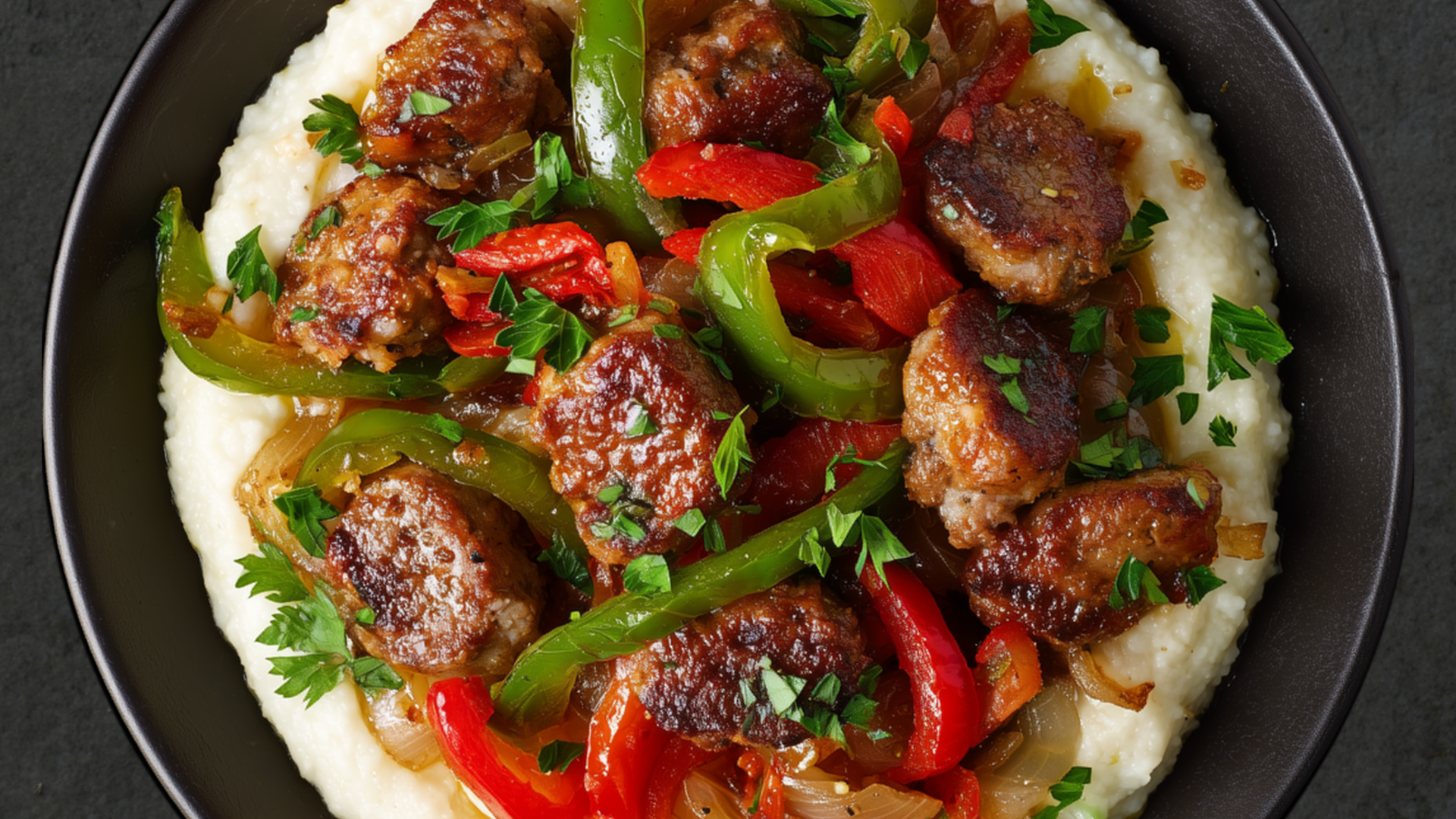The
Daily
Fix
For load:
Italian Sausage and Peppers Skillet over Cauliflower Mash
Zone 2 Exercise for Mitochondrial and Metabolic Health

Bench press 5-5-3-3-3-1-1-1-1 reps
Skillet of savory Italian sausage, peppers, and onions served over creamy cauliflower mash.
Do We Really Need Zone 2?
Additionally, practice scales or balance drills for 20 minutes.
Move slowly; maximize loads. Attempt to increase loads for each of the 9 sets.
Post loads and plank progress to comments.
Ingredients
1 lb Italian sausage (mild or spicy, no added sugar)
1 Tbsp butter or beef tallow (for cooking)
1 red bell pepper, sliced
1 green bell pepper, sliced
1 small onion, sliced
2 cloves garlic, minced
½ tsp coarse sea salt
½ tsp cracked black pepper
1 tsp dried Italian herbs (basil, oregano, thyme)
3 cups cauliflower florets
2 Tbsp heavy cream
2 Tbsp butter (for mash)
1 Tbsp extra virgin olive oil (for finishing)
Fresh parsley, chopped (for garnish)
Macronutrients
Protein: 74g
Fat: 150g
Carbs: 47g
Preparation
Cauliflower Mash: Steam or boil cauliflower florets (3 cups) until very tender, about 10 minutes. Drain well and mash with heavy cream (2 Tbsp) and butter (2 Tbsp) until smooth. Season with salt and pepper to taste. Keep warm.
Sausage and Peppers Skillet: Heat butter or tallow (1 Tbsp) in a large skillet over medium heat. Add sliced onions (1 small) and sauté until soft, about 3–4 minutes.
Add minced garlic (2 cloves) and cook for 1 minute until fragrant.
Add Italian sausage (1 lb), breaking it up if using ground sausage, and cook until browned and cooked through, about 8–10 minutes.
Add sliced red and green bell peppers (1 each), Italian herbs (1 tsp), salt (½ tsp), and pepper (½ tsp). Cook until peppers are tender, about 5–7 minutes.
To serve, spoon cauliflower mash onto plates and top with sausage and peppers mixture.
Drizzle extra virgin olive oil (1 Tbsp total, divided) over the top and garnish with fresh parsley.
Zone 2 helps, but higher intensity delivers more.
Zone 2 training, widely promoted as the sweet spot for mitochondrial health and fat metabolism, is defined as exercise just below the first lactate threshold—where you can comfortably converse while working at roughly 67–82% of your maximum heart rate. Advocates claim that it boosts mitochondrial function, insulin sensitivity, glucose control, and metabolic flexibility while being approachable and safe. However, evidence supporting its superiority is mixed. While some studies in populations like type 2 diabetics show improvements in mitochondrial enzyme activity, many meta-analyses and comparative studies reveal that higher-intensity exercise produces far stronger adaptations. Biochemically, Zone 2 creates relatively little metabolic stress, whereas higher intensities generate the signals (via AMP, ADP, AMPK, and calcium pathways) that more robustly stimulate mitochondrial biogenesis, cardiovascular gains, and improvements in VO₂max and lactate thresholds.
This doesn’t mean Zone 2 is useless—it can be a valuable tool for beginners, those returning to exercise, or as a low-recovery option on days when higher-intensity training isn’t feasible. It promotes fat oxidation, encourages regular movement, and can extend total training volume without taxing the body heavily. But the narrative that Zone 2 is uniquely optimal for longevity or metabolic health is misleading. For time efficiency and maximal mitochondrial and cardiovascular benefits, higher-intensity exercise (including intervals and continuous efforts above Zone 2) should take priority. Zone 2 works best as a supplement—helpful for recovery and consistency—but it should not replace higher-effort sessions if the goal is to maximize performance, health, and adaptation.
COMMENTS
*no practice, completed a triplet

THURSDAY 250828